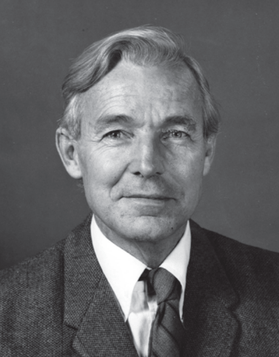Edward A. Irving facts for kids
Quick facts for kids
Ted Irving
|
|
|---|---|
 |
|
| Born | 27 May 1927 |
| Died | 25 February 2014 (aged 86) Saanich, British Columbia, Canada
|
| Alma mater | University of Cambridge (BA, PhD) |
| Spouse(s) | Sheila (née Irwin) |
| Children | Kate, Susan, Martin, George |
| Awards | |
| Scientific career | |
| Fields | Paleomagnetism |
| Institutions | Geological Survey of Canada, Pacific Geosciences Center |
| Influences | Patrick Blackett, Keith Runcorn, Ronald Fisher |
Edward A. "Ted" Irving (born May 27, 1927 – died February 25, 2014) was an important geologist and scientist. He worked for the Geological Survey of Canada. Ted Irving studied paleomagnetism, which is the study of Earth's ancient magnetic field. His research gave the first real proof for the idea of continental drift. This is the theory that continents move over time. His work helped us understand how mountains, climate, and life have changed over millions of years.
Contents
Early Life and Education
Ted Irving was born on May 27, 1927, in Colne, England. He grew up in the Pennine Hills of east Lancashire. In 1945, he joined the British Army. He served in the Middle East as an infantry soldier.
After his army service, Irving began studying geology. He went to the University of Cambridge in 1948. He earned his first degree, a Bachelor of Arts, in 1951. For the next year, he worked as a research assistant. He helped Keith Runcorn in the geology and geophysics department. Then, he started his advanced studies.
Discovering Earth's Past Magnetism
When Irving started his graduate studies, scientists knew about Earth's magnetic field for only a few centuries. Ted wanted to learn about its history much further back in time. He worked with other students, Ken Creer and Jan Hospers.
Irving used a special tool called a magnetometer. This tool was designed by Patrick Blackett. It helped him study the magnetic directions inside rocks. These directions are locked in by tiny iron minerals. He found big differences between today's magnetic field and what was recorded in very old rocks. These rocks were from the highlands of Scotland.
He realized that the only way to explain this was if Scotland had moved. It had shifted compared to the Earth's magnetic North Pole. Irving also discovered that India had moved north by 6,000 kilometers. It had also rotated quite a bit. These findings strongly supported Alfred Wegener's theory. Wegener had suggested continental drift back in 1912.
In 1954, Irving tried to get his PhD degree for his research. However, his work was so new that the examiners didn't fully understand it. They didn't give him the degree at that time. But this didn't stop him from continuing his important research. He soon got a job as a research fellow. This was at the Australian National University in Canberra.
Scientific Career
For the next ten years, Ted Irving lived in Australia. He studied the ancient positions of Australia. He published about 30 scientific papers during this time. He showed that the continent had moved southward since the Permian period. In 1965, he sent some of his papers to Cambridge. This time, he was awarded a ScD. This was the highest degree given at Cambridge then.
While in Australia, Irving met his wife, Sheila. She was from Canada. In 1964, they moved to Ottawa, Ontario, Canada. Irving started working as a research officer. He joined the Dominion Observatory.
In 1966, Irving went back to England for a short time. He taught geophysics at the University of Leeds. But he returned to Ottawa in 1967. He became a research scientist in the Earth Physics Branch. Later, in 1981, Irving moved to Sidney, British Columbia. There, he set up a special paleomagnetism laboratory. This lab was at the Pacific Geoscience Centre. This center later became part of the Geological Survey of Canada. He mapped how Vancouver Island and other parts of the Cordillera had moved. They had slid sideways and rotated compared to the ancient Canadian Shield.
By 2005, Irving was semi-retired. He continued to study the Earth's magnetic field in ancient times. He wanted to understand how the Earth's crust changed shape. He also studied how latitudes varied long ago. Ted Irving and his wife Sheila had four children. He passed away on February 24, 2014, in Saanich, British Columbia.
Publications
Ted Irving wrote a total of 205 scientific papers. He also published the first book ever written about paleomagnetism.
Honors and Awards
Ted Irving received many important awards for his scientific work. He was given the Gondwanaland Gold Medal. He also won the Logan Medal in 1975. The American Geophysical Union awarded him the Walter H. Bucher Medal in 1979. He received the J. Tuzo Wilson Medal in 1984. In 1997, he was given the Arthur L. Day Medal. The Geological Society of London awarded him the Wollaston Medal in 2005.
He became a fellow of the Royal Society of Canada in 1973. In 1979, he was made a fellow of the Royal Society of London. In 1998, he was chosen to be part of the National Academy of Sciences. In 2003, he was invited to become a Member of the Order of Canada. He also received an honorary degree from the University of Victoria in 1999.

